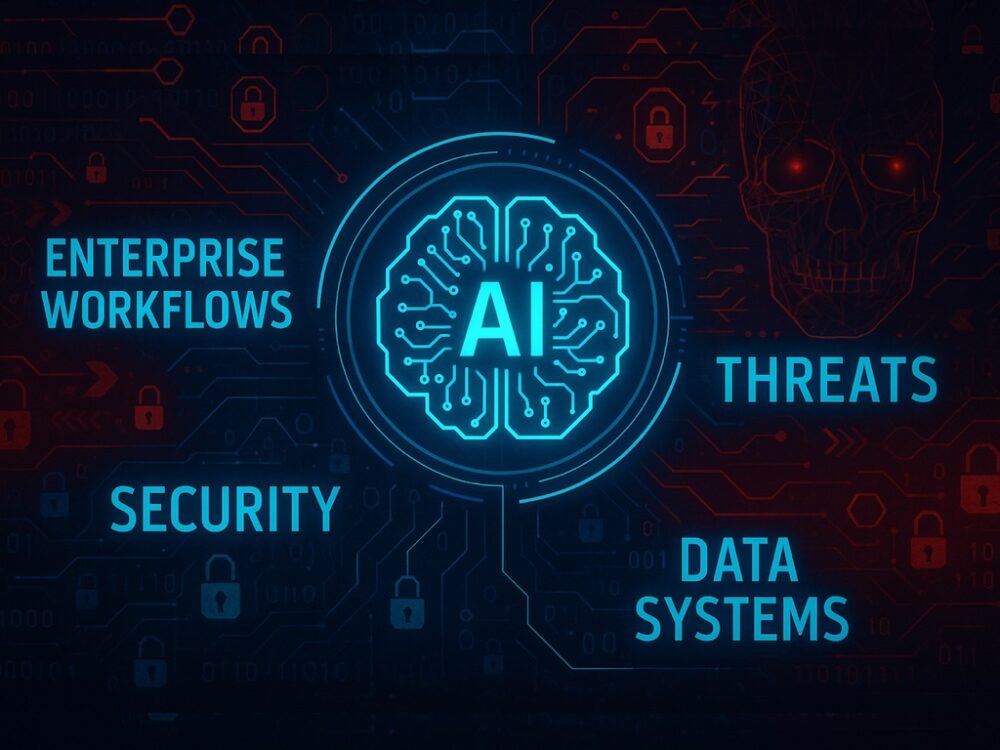AI Security: From Experimentation to Active Threat Surface
AI agents are no longer experimental—they are operationally embedded across enterprise workflows, interfacing directly with core systems, proprietary data, and user identities. As these agents scale, they are increasingly becoming high-value targets. The warning is clear and immediate: AI is not secure by default. Enterprise adoption has accelerated faster than the evolution of its corresponding security architecture, leaving significant gaps exploitable by adversaries.
These adversaries operate without the friction of procurement, regulation, or institutional inertia. They iterate in real time, weaponizing our own tools—models, APIs, and autonomous agents—against us. Meanwhile, institutional defense mechanisms remain rooted in legacy perimeter models and outdated telemetry, structurally incapable of countering threats designed natively for an AI-first ecosystem.
Compounding this risk is the troubling erosion of public cyber defense infrastructure. The proposed $500 million reduction to CISA funding exemplifies a misguided shift: treating foundational cybersecurity as discretionary even as threat velocity increases. State-aligned actors are not hesitating; they are scaling operations, innovating rapidly, and subverting systems at the identity and trust layer.
Emerging Threat Realities: Selected Incidents and Tactics
- Canadian Utility Breach: Nova Scotia Power’s corporate IT environment was targeted. While grid operations were reportedly unaffected, the incident revealed dangerous IT/OT segmentation failures, highlighting broader systemic vulnerabilities in infrastructure protection.
- Ascension Health Systems Ransomware Attack: A coordinated ransomware event disrupted hospital operations, forcing emergency service reroutes and patient care delays. The intrusion vector is under investigation but aligns with previously exploited software supply chain vulnerabilities.
- APT29 / Cozy Bear – Identity Infrastructure Targeting: Renewed campaigns utilize “Magic Web” malware to compromise ADFS authentication systems, achieving persistent privilege escalation via trust path exploitation—foreshadowing broader assaults on hybrid identity architectures.
- Chinese Threat Activity – Supply Chain and Identity Exploits: A shift toward adversary-in-the-middle attacks and hijacked update channels enables stealthy infiltration, circumventing conventional detection through misconfigurations in federation protocols and CI/CD pipelines.
AI-Specific Attack Surface: Active Exploits and Systemic Risks
- Prompt Injection – DeepSeek R1 Breach: Researchers demonstrated full bypass of guardrails via prompt injection, underscoring the failure of current context isolation models. The attack success rate was 100%, with exploit vectors published publicly, elevating urgency for AI-specific security hardening.
- Langflow Vulnerability Disclosure: Langflow’s AI workflow builder was added to CISA’s Known Exploited Vulnerabilities list shortly after proof-of-concept publication. The speed at which open-source AI tools are adopted—and exploited—exceeds the defensive response capacity of most organizations.
- Third-Party Exploits – SonicWall, Apache Pinot, SAP NetWeaver: All suffered active exploitation prior to patch application in production. These incidents reaffirm the imperative for vendors to maintain transparent, high-velocity vulnerability disclosure practices—and for enterprise teams to implement preemptive validation protocols.
A New Operational Paradigm
This is not a transitory phase. It is a directional shift in the security landscape. AI-native threats are targeting the foundations of digital trust—identity, autonomy, and federation. Organizations must evolve accordingly. Defending legacy perimeters against adversaries operating in real time with adaptive, AI-powered tooling is no longer viable. The operational imperative is clear: secure AI at the core, restructure identity systems for resilience, and restore cyber infrastructure investment before the next breach outpaces our ability to respond.





